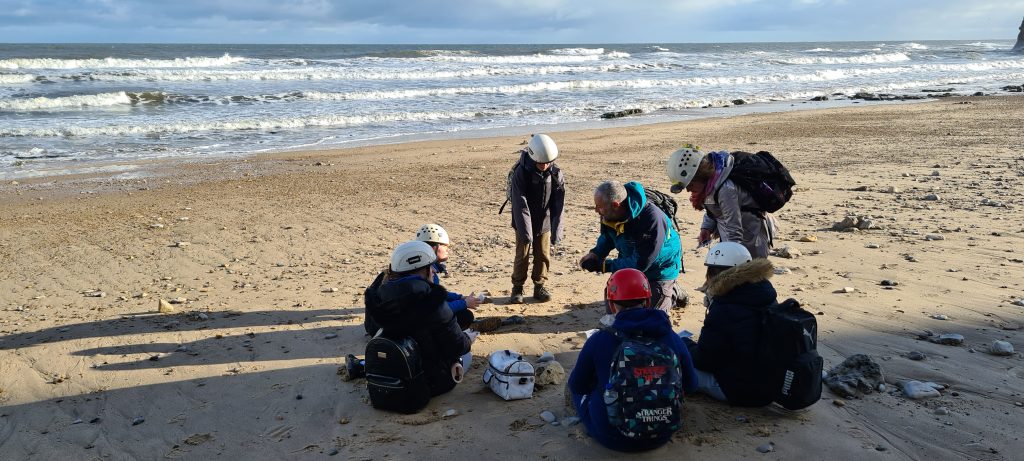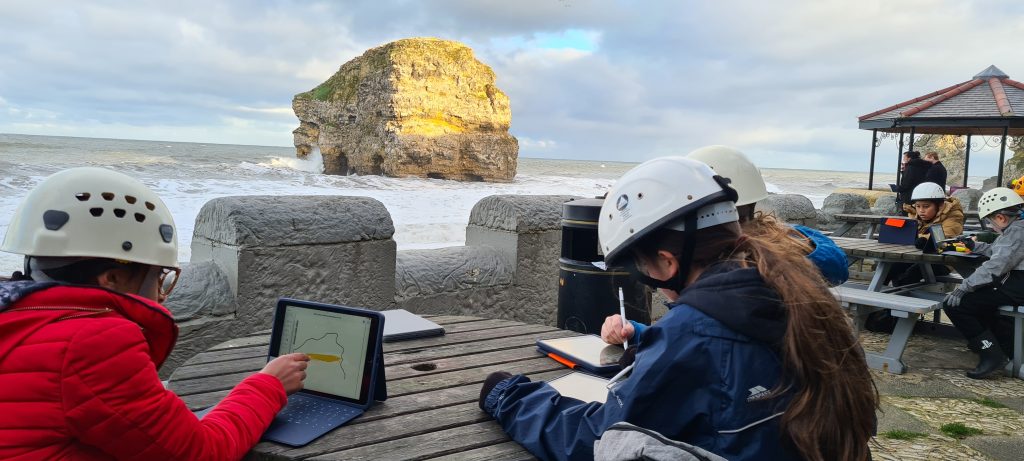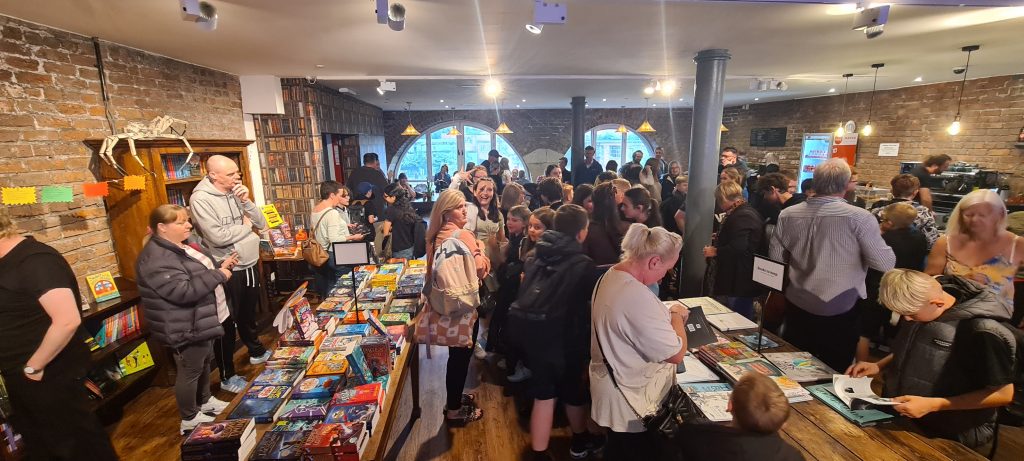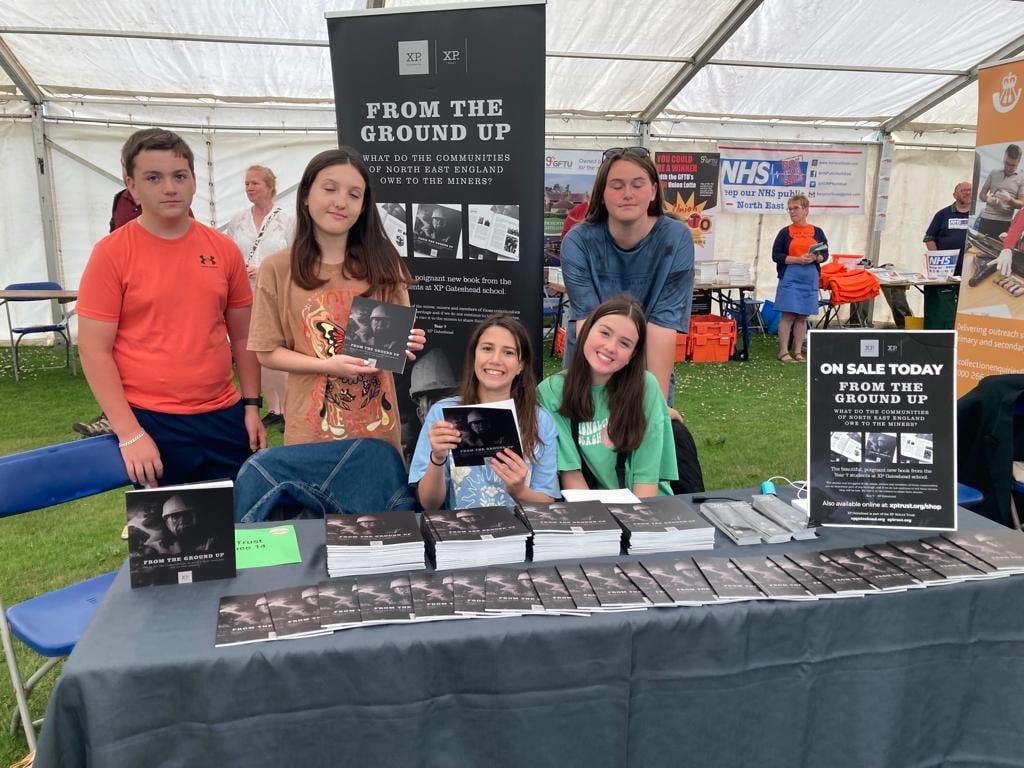GQ: What do the communities of the North East owe to the miners?
Expedition lead: Martin Said
Curriculum: HUMAN/STEAM
Phase/Year group: Year 7
Delivery date: Autumn 2021
In the Autumn term of 2021 students at XP Gateshead studied an expedition called ‘From the ground up’ exploring all three curriculum strands of diversity and belonging, social justice and the climate emergency.
Immersion
Our immersion began with a Building Background Knowledge protocol which looked at why coal was so valuable and studied borehole logs to help us to understand what was under our feet. We also learned about diverse communities supporting each other through studying how the Lesbian and Gay community of London supported striking miners in South Wales in 1984. We also studied local maps and saw how villages had grown during the industrial revolution.

Case Study 1 – The growth and decline of Whitburn Colliery
During the first case study we studied the industrial revolution and learned about the importance of the discovery of seams of coal across the north of England and in Wales. We visited Beamish Museum to interview ‘actors in role’ as members of the mining community during the debate around the 1842 mining act.
We studied the boom in mining as a result of the industrial revolution, and how villages such as Marsden and Whitburn grew around the pits uplifting those communities.
We learned how to carry out a historical enquiry by studying the closed mine at Whitburn on the North Sea coast. This involved interrogating texts as well as interviewing members of the community. We visited the former site as fieldwork to correlate with what we had learned in our map studies and to see where the former village stood and to collect data on species found at the nature reserve that now stands at the former pit top.

This inquiry allowed us to chart the rise and decline of Whitburn Colliery pit, telling its story by uncovering: how the coal came to be there, how the industrial revolution laid the seeds for the class system as we know it today, how chartists and unionists were a driver for better conditions for workers, how the communities around the pit and the cultural and economic embetterment of the people was so intrinsically linked to the pit itself.
We also studied the rock cycle and how specific rocks and minerals came to be where they are in the North-East. As part of this study we learned about the physics and chemistry of the rock cycle including the particle model which helped us to understand how change of state occurs. We also learned about atoms, elements and compounds to help us explain the pure and impure substances found in rocks and how they can be separated. This case study included fieldwork to sites at different rock strata in Tyneside dating from the Carboniferous, through to the Permian period.
Our anchor text was David Almond’s novel Kit’s Wilderness, a story about a boy returning to his family roots in a mining community in Northumberland. This story, about a boy and his grandfather’s memories of the mines served as a metaphor for the importance of recording and honouring miners’ stories, before these important stories of our cultural heritage disappear.
We focused on building artwork skills of form, line and tone by way of creating figure drawings in charcoal, doing studies from the artist ‘Harry Malkin’ who creates artwork of coal mining and industry. We produced viewfinder studies and copies using the grid method, before moving on to creating pieces based on mining artefacts on black paper using chalk.
Case Study 2 – 1984 Miners’ strike
In this case study we learned how economic pressures and a desire to shrink the state, as well as limit the power of unions, the Conservative government started a programme of mine closures. We learned about the role that unions play in society and heard from experts who had lived through this time about the impact of 12 months of hardship for the miners and how their communities have since been impacted.
This was backed up by fieldwork in the third case study where we were able to see first hand the impact of pit closures on North-East community.
Case Study 3 – Pit communities of the North-East of England
This first case study gave us the skills we needed to be able to carry out the second case study more independently. In the second case study, we worked in smaller groups to carry out a historical enquiry into a specific mine in the North-East of England, again interviewing members of the mining community and carrying out research to help us write accounts of our respective mines.
The mines and sites of importance that different groups studied were:
- Felling/Branding Main
- Heworth
- Wardley
- Blackhall
- Boldon
- Easington
- Horden
- Murton
- Vane Tempest
- Westoe
- Dunston Staithes
The writing of all of Year 7 was then gathered together to make a book also called From the Ground Up. This book has our biographies and factual writing interspersed with our beautiful charcoal sketches of mining artefacts.
The expedition culminated when we carried out a celebration of learning to an audience of our parents and members of the mining community. During this celebration of learning we read extracts from the book, performed music which we had written and had been inspired by Gresford: The miners’ hymn. This music was performed against a backdrop of archive footage from the mines, inspired by the film The Miners’ Hymns, underscored by Johann Johannsson. This gave us an opportunity to not only promote the book in advance of it going to print, but also to show our respect and appreciation for the contribution that miners made to our community. The book is available to buy from the school online shop and has also been distributed in the community through libraries and local book stores such as Seven Stories.

We also launched the book at the Durham Miner’s Gala. Students spoke with confidence to members of public about their work, why it is important to continue to tell the stories of our cultural heritage and sold copies of the book to the community.

Learning Targets
The learning targets for the expedition were:
- LT1: I can give a clear and organised summary of growth and decline of industries in the United Kingdom.
- LT2: I can carry out an historical enquiry about the growth and decline of a coal mine in the North-East of England.
- LT3: I can explain the importance of coal mining to the North-East of England.
- LT4: I can analyse the causes of pit closures and the effects on north-east communities.
- LT5: I can write with accuracy and purpose in a variety of forms to express my deepening understanding of, and response to the guiding question.
- LT6: I can reflect upon features of successful communities – such as diversity and belonging – to think about our character values and how we build our own community at XP Gateshead.
